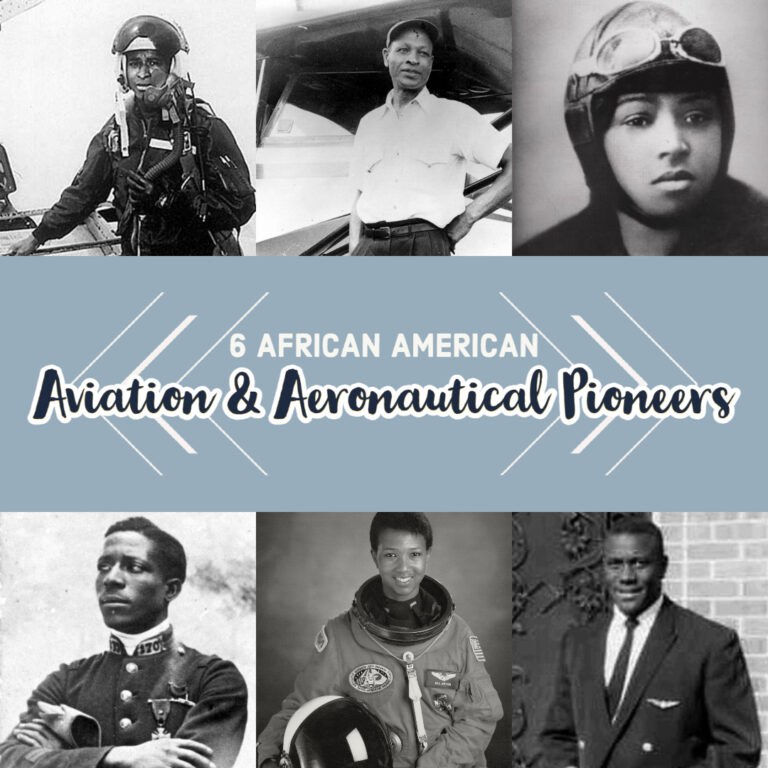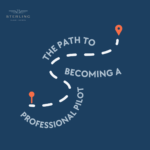Every February marks the celebration of Black History Month; a time to learn about and recognize those who broke down barriers in professions and society, to pave the way for future generations.
To kick off the month, we want to reflect on the pioneers who were the first to accomplish a milestone in aviation or space. Here are six historical African Americans, whose contributions to both the industry and their community live on.
- Robert Lawrence
Robert Lawrence was the first African American astronaut selected by a national space program. In 1967, following the Cold War, he was selected to participate in the Manned Orbiting Laboratory Program (MOL), designed to obtain photos of adversaries by two-man teams living 30 days at a time in mini-space stations. Lawrence was an esteemed Air Force pilot with more than 2500 flight hours. Unfortunately, only six months after being selected he was killed in a F-104 Starfighter training accident. To honor him, the Space Shuttle Atlantis crew took his MOL mission patch into orbit in 1997, and his name was engraved in the Astronauts Memorial Foundation’s Space Mirror at Kennedy Space Center. - Cornelius Coffey
In the 1920’s Cornelius Coffey was denied acceptance into flight schools because of his race. However, he kept trying and eventually a black businessman lent him a vacant storefront where he would build a one-seat airplane powered by a motorcycle engine and teach himself to fly. By the late 1930’s he had opened his own flight school in south Chicago, which was instrumental in instructing African American WWII pilots. He is remembered as the first African American to hold a pilot certificate as well as an aircraft mechanic’s license. - Bessie Coleman
Bessie Coleman is remembered as the first African American woman to earn a pilot license. She was so determined to become a pilot that in 1920 she left her job as a manicurist in Chicago and enrolled in a seven-month flight school program in Northern France, where a more liberal mindset allowed women the opportunity to fly. She learned aerial maneuvers in a Nieuport Type 82, with a 40-foot wingspan, and by 1922, she was performing stunts across America. Following a tragic accident during a practice flight, the Bessie Coleman Aero Club opened in Los Angeles in 1929. - Eugene ‘Jacques’ Bullard
Another pilot who was trained in France, Eugene Bullard left his home in Columbus, Georgia, to enlist in the French Foreign Legion at the onset of World War I. Rising through the ranks he accepted an offer to join the French Air Force as a gunner but received permission to train as a pilot. Bullard, along with 200 other Americans, joined the Lafayette Flying Corps, flying combat missions until late 1917. He is remembered as the first African American combat aviator. His rejoined the French army in 1940, when Germans invaded the country. Following an injury he returned to America, settling in New York. In 1954, he was one of the veterans chosen to flight the ’Everlasting Flame’ at the French Tomb of the Unknown Soldier and was posthumously appointed a second lieutenant by the Secretary of the Air Force. - Dr. Mae C. Jemison
In 1992, as part of the STS-47’s Spacelab J – the 50th Space Shuttle mission and the second for shuttle Endeavor – Dr. Mae Carol Jemison became the first African American female astronaut. With degrees in chemical engineering and medicine, Jemison served as the science mission specialist and logged 190 hours, 30 minutes and 23 seconds in space. Following her work at NASA, she started a medical company, taught at Dartmouth College and Cornell, wrote children’s books, and founded the Dorothy Jemison Foundation of Excellence. Her accomplishments were commemorated by Lego which released a minifigure of her in its Women of NASA set. - Marlon DeWitt Green
Marlon DeWitt Green is remembered for breaking the color barrier at commercial airlines. Despite his exemplary resume and more time in a cockpit than any other applicant, he was denied a job in 1957 by Continental Airlines. After being passed over, he took his case to court and won in 193, when the U.S. Supreme Court ruled unanimously in his favor. At the time of his application, Green had more than 3,000 flight hours, most multi-engine, through his experience flying for the military and the Michigan Department of Transportation. Following his successful legal battle, he flew for Continental for 14 years before retiring.





